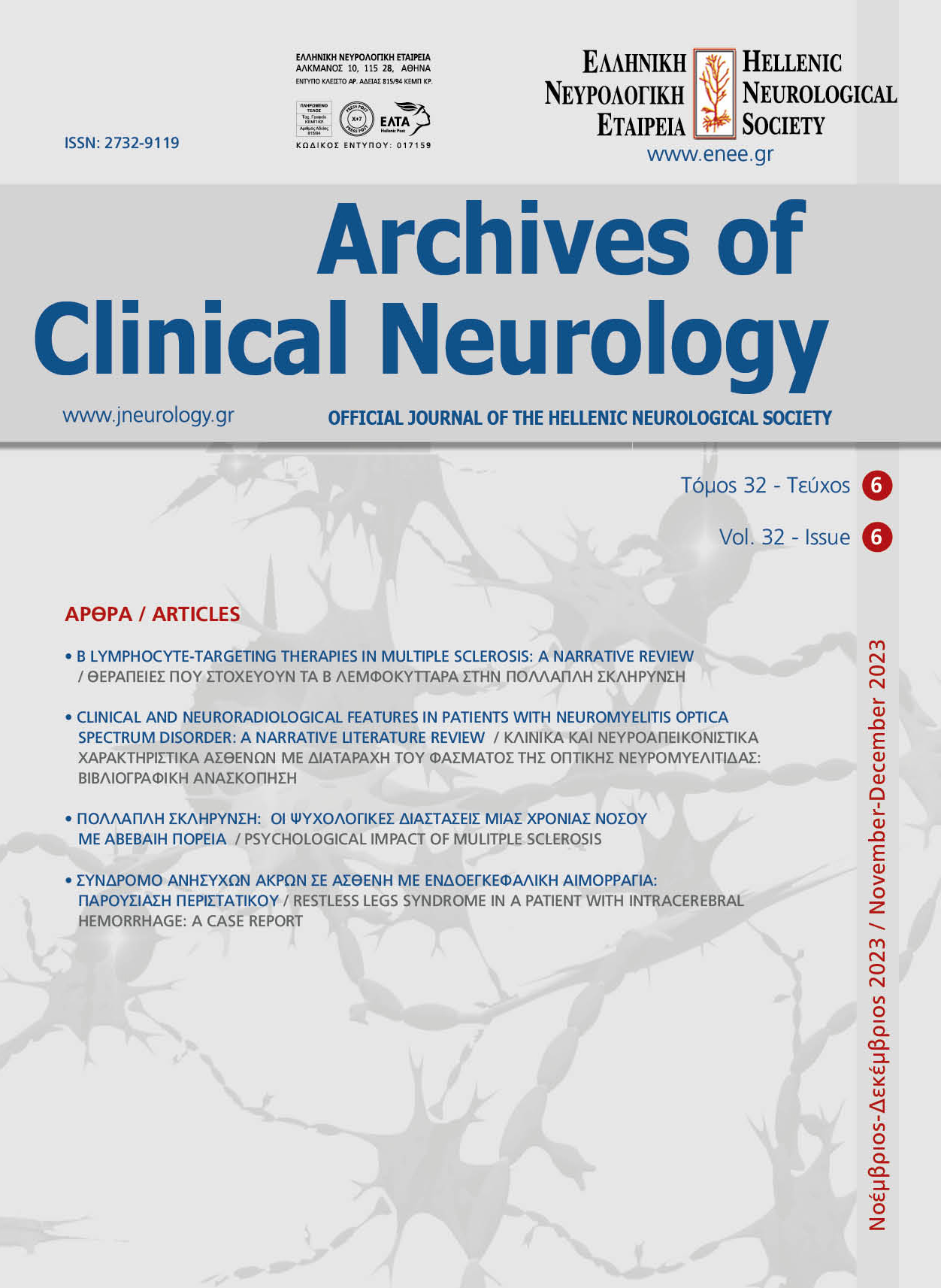CLINICAL AND NEURORADIOLOGICAL FEATURES IN PATIENTS WITH NEUROMYELITIS OPTICA SPECTRUM DISORDER: A NARRATIVE LITERATURE REVIEW
Keywords:
neuromyelitis optica spectrum disorder, clinical evaluation, Magnetic Resonance Imaging, DiagnosisAbstract
ABSTRACT
Neuromyelitis optica spectrum disorder (NMOSD) is an autoimmune inflammatory demyelinating disease of the central nervous system (CNS), characterized by severe clinical involvement of the brain, spinal cord and optic nerves. The diagnostic approach is based on magnetic resonance imaging and testing for antibodies against aquaporin-4 in the serum, categorizing patients as seropositive or seronegative. Due to the uniqueness of the pathogenesis of the disease, specific clinical-imaging patterns usually emerge in NMOSD in comparison with other autoimmune or demyelinating diseases of the CNS. Sufficient knowledge of these characteristics is now deemed necessary for a correct and early diagnosis of the disease, thereby enabling the use of appropriate targeted immunotherapies. In the present narrative review, we summarize the existing literature focusing mainly on the clinico-radiological characteristics and diagnostic criteria of NMOSD patients, with a brief description of the current therapeutics of the disease. We also provide characteristic examples of NMOSD cases from our own clinical experience that focus on the diagnostic approach of the disease based on current neuroimaging and clinical diagnostic criteria.


